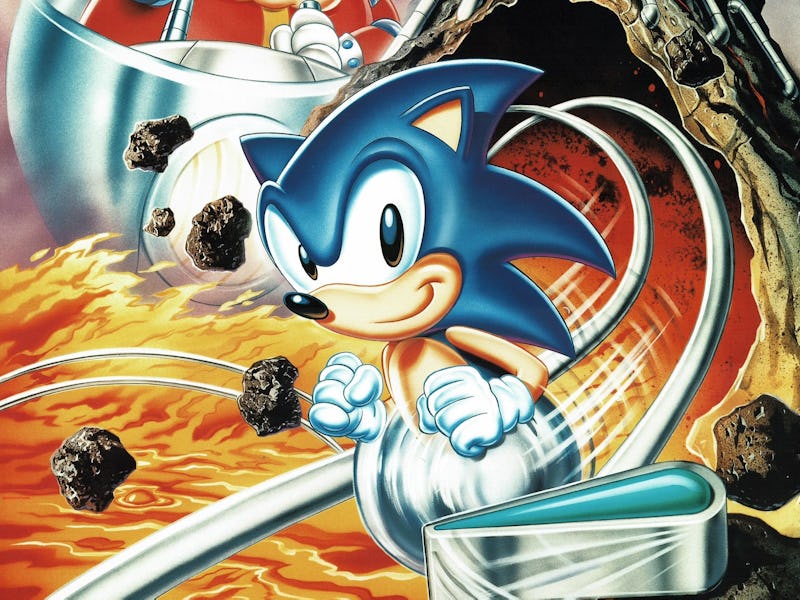You need to play the most underrated Sonic spin-off ever on Nintendo Switch ASAP
“What if we made Sonic BE the pinball?”

One of the most ingenious levels in the 16-bit era of video games comes in Sonic the Hedgehog 2 when everyone’s favorite blue speedster with an attitude enters what’s known as the Casino Night Zone. The level takes advantage of the ball shape that Sonic takes when he’s speeding through levels. If he’s a ball, then why not make him a pinball? And so, Sonic became the centerpiece of an elaborate and widely praised level that’s essentially an oversized and digitized pinball game. It was so beloved, in fact, that a spinoff was developed in the form of Sonic the Hedgehog Spinball, which is available to play right now if you’ve subscribed to Nintendo Switch Online + Expansion Pack.
Skip ahead to around the 0:41 mark to see Sonic the Hedgehog Spinball in action on the Nintendo Switch.
The original Sonic the Hedgehog made such a mark on the industry in 1991 that the New York Times reported Sega “boasting that 1991 will be remembered in the world of video games as the year that Sonic the Hedgehog left Super Mario in the dust.”
While that was never the case, Sega still needed to keep up the momentum. Backed by a $10 million advertising campaign, Sonic the Hedgehog 2 was a smash hit in the 1992 holiday shopping season, moving 400,000 units in its first six days. When asked to explain the game’s success, Tom Kalinske, Sega’s CEO, explained that “first and foremost, Sonic 2 is the fastest and coolest game ever developed.”
Casino Night Zone was a big part of Kalinske’s argument. In order to keep Sonic’s momentum going before the upcoming holiday shopping season while Japanese developers made Sonic 3, Sega decided to use the mostly-American Sega Technical Institute to spin-off (get it!?) the Casino Night Zone into its own game. Enter Sonic the Hedgehog Spinball.
WAY TO GO, SONIC!
Video game pinball made a lot of sense at this time. Pinball machines were often competition for games in arcades, so why not poach the competition? While video games at the time couldn’t offer the physical interactivity of a pinball table, they could do away with the rules of physics, creating impossible shots and challenges that helped differentiate it from a more traditional pinball experience.
Sonic Spinball plays with some of the possibilities of virtual pinball while trying to keep its gameplay at least somewhat grounded. The first stage takes place in a toxic-sludge sewer world, with monsters lurking in an ocean of green goo. The aim, ostensibly, is to find two chaos emeralds amidst the various pipes, bumpers, flippers, and ramps.
The way to find these emeralds is to send Sonic flying at reckless speeds. Along his journey, he’ll encounter bumper-style enemies, like worms, that will come out of nowhere. You’ve just gotta bump them. It’s a little funny, too. In most Sonic games, running into an enemy is a guaranteed way to lose your rings or a life, but in Spinball, it’s the only way to progress.
Watch out for that robot dragon, Sonic!
Perhaps the most clever addition is found when both flippers miss Sonic and he falls through the center gap. In regular pinball, that’s a surefire way to lose a ball. But here, Sonic gets another chance. In the first level, he’ll grab onto his platform and be given a very limited time to jump back into the board. Failing to do so means he gets eaten by a sea monster, although in some cases he’ll enter a frenzied, button-mashing fight to save himself.
On the negative side, there’s a feeling of powerlessness in Speedball. The game doesn’t have pinpoint accuracy, and Sonic feels a lot heavier, slower, and less bouncy than a traditional pinball. You’re occasionally left knowing exactly what shot you need to advance, but you wind up having to attempt the shot again and again while hoping for the best. This is part of any pinball experience, to be sure, but the tactile feel of IRL games, as well as more advanced virtual ones, give the player more of a feeling of control.
Speedball might not have been the revolution in gameplay that Casino Night Zone was, but it advanced the concept and added a few bells and whistles along the way. And at the end of the day, aren’t bells and whistles what pinball is all about?
This article was originally published on